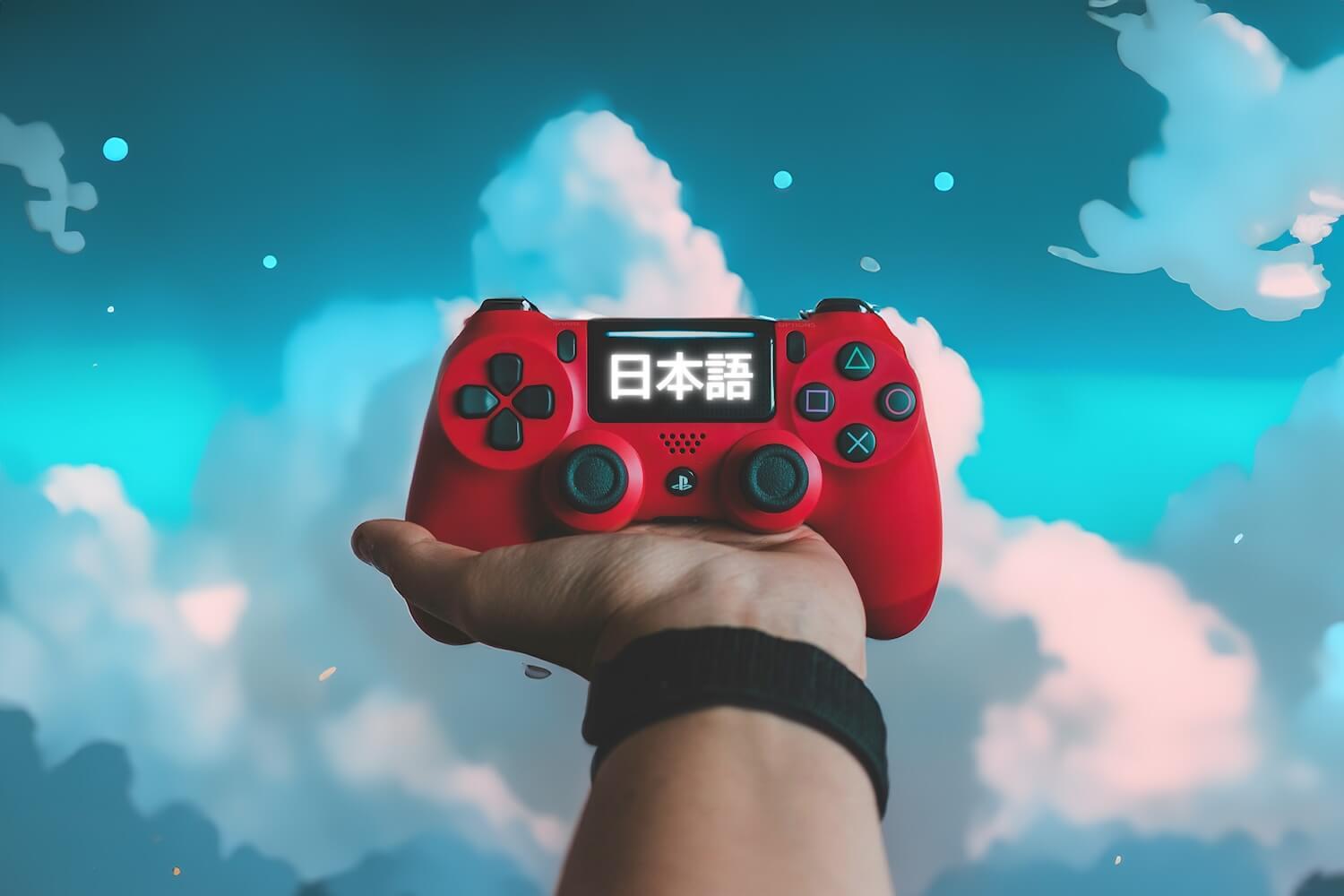Table of Contents
Intro
Note: This article was written by Shinji Muto, with contributions and edits by Lawrence Tan.
Hello everyone, I'm Shinji! I am a Japanese language teacher and writer, and I have been helping learners eager to master Japanese for the last seven years.
Japan may be a small country in the Far East, but the global interest in learning Japanese is growing rapidly. For example, Japanese pop culture, including manga, anime, and video games, is gaining popularity worldwide. Additionally, Japan offers an attractive market for international marketers due to being the fourth largest economy in the world, leading to billions of dollars spent each year by Japanese consumers.

It is not surprising that thousands of foreigners try to learn Japanese every year. However, learning Japanese is not an easy journey. I have noticed that while some learners make rapid progress and eventually become fluent, others lose motivation and give up after a few months.
To address this, I surveyed my current and former Japanese language students to understand the main struggles Japanese language learners face and how to overcome these challenges. All of the students are native English Speakers. I will share the results of the survey and discuss what we can do to maintain motivation and make consistent progress in learning Japanese to reach your goals.
What Makes Learning Japanese so Hard?
The survey revealed three key challenges that many Japanese language learners face. Let's explore each of them.
1. Kanji
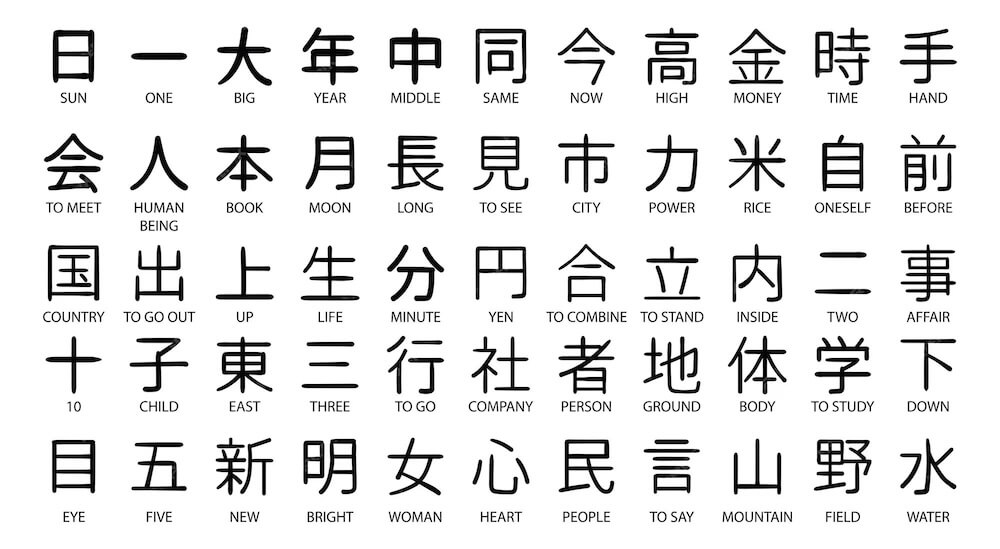
Contrary to my initial expectations, many learners didn't find learning hiragana and katakana characters too difficult. One student even mentioned that they only needed three to four weeks to memorize all hiragana and katakana characters, which is quite impressive!
However, it seems that almost all learners felt overwhelmed by the number of kanji characters they needed to remember to become fluent in Japanese. As of 2021, the Japanese government has listed a total of 2,136 kanji characters as Jōyō kanji (Commonly Used Kanji). Additionally, each kanji character usually has more than one pronunciation or reading, which adds to the challenge.
2. Vocabulary Size

The second challenge is the large number of vocabulary words required. To be fluent in Japanese, you'll need to know around 5,000 words.
Unlike European languages like Spanish, Japanese vocabulary doesn't share common roots with English. For instance, the English word "foundation" translates to "la fundación" in Spanish, and "nervous" becomes "nervioso." You can see the similarities, thanks to shared Greek or Latin roots.
Japanese, however, mostly has no relation to English words, so learners must memorize a completely new set of sounds and words from scratch.
3. Grammatical Difference from English
Finally, there's the complexity of Japanese grammar. Japanese sentence structure can feel quite foreign to English speakers, as it follows the SOV (subject–object–verb) order, meaning the verb always comes at the end of the sentence. This can feel a bit backward if you're used to English's SVO (subject–verb–object) structure.
But I don't think Japanese is necessarily harder than other languages. For example, Japanese doesn't use gendered nouns, and it doesn't distinguish between singular and plural forms, which means fewer rules to remember. The verb conjugation is also relatively simple.
In Spanish, for instance, verbs change depending on who is doing the action: "Yo como" (I eat), "Tú comes" (You eat), "Él come" (He eats), and so on. In Japanese, however, "eat" is simply "taberu" (たべる) regardless of the subject. Pronunciation is also pretty straightforward, without any throat sounds like in Arabic or click sounds as found in African languages like Zulu.
There are many reasons to argue that Japanese is actually simpler than some other languages! So while Japanese might be different from European languages, it's not necessarily harder. With time and effort, anyone can achieve fluency.
Why Do Learners Give Up?
Now, if Japanese isn't necessarily more difficult than other languages, why do some learners give up? Through the survey, I found three main reasons.
1. Lack of Time and Motivation

The number one reason is simply a lack of time to study. Learning a new language requires regular practice, not just during an hour-long class with a teacher. Realistically, we all have busy lives. After a stressful workday or school, it is not easy to motivate yourself to take time to study the language.
2. Overwhelmed By Complexity

The second reason is more mental. Many students get overwhelmed by the complexity of Japanese grammar and are discouraged by how long it takes to master Japanese. However, in my opinion, the reason they feel overwhelmed is that they focus too much on detailed grammatical explanations.
I won't deny the importance of learning grammar, and I believe it is good to have one or two grammar books. However, some grammar books use unnecessarily difficult technical terminology, such as auxiliary verbs, conjunctive particles, and intransitive verbs. This makes Japanese grammar seem unnecessarily intimidating and overwhelming.
3. Limited Opportunity To Practice
The third reason learners give up is the limited opportunities to practice Japanese in real-life situations. Many learners do well in structured learning environments but struggle to find opportunities to use the language outside of the classroom. This lack of practice can lead to a loss of confidence and eventually losing the motivation to continue learning.
If you've experienced any of these challenges, don't worry—you're not alone! In the next section, I'll share strategies to help you stay motivated and keep progressing.
Learning Japanese on Easy Mode
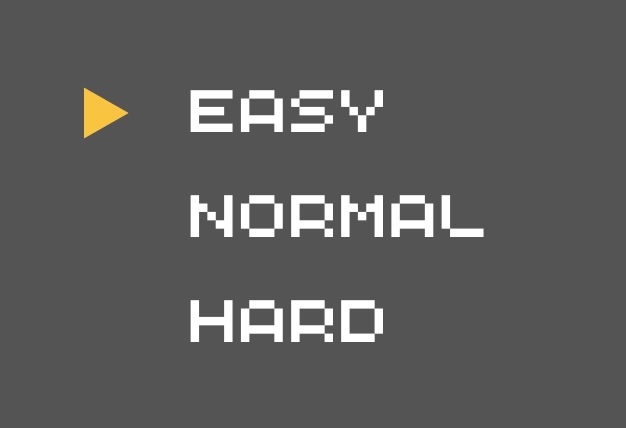
To overcome these challenges many Japanese language learners face, I would like to suggest three strategies:
1. Immerse in Content that You're Interested in

Studying with content that you find interesting can make a huge difference in your motivation. Whether it's anime, vlogs, or history content, consuming content you enjoy not only makes learning fun but also helps you learn grammar in context. Studying from textbooks on the other hand, can feel very dull pretty fast.
Why Videos are the Best Immersion Medium
While there are many different forms of immersion, watching videos is one of the best ways to immerse. It has tons of benefits. It has this fascinating effect of transporting you to a completely new world: new culture, new sense of humor, new visual aesthetics. In addition to watching an already entertaining video, this sense of adventure can further reinforce the motivation to learn.
On the more technical side, videos come with audios that help you hear how people really speak in real life scenarios (if we're excluding anime content). It also gives you additional context on why people say certain phrases. This is particularly relevant for the Japanese language where a lot of things are omitted and implied (eg. pronouns) based on previously known information. Videos also tend to be more memorable than pictures, which is a better tool for word associations for remembering vocabulary.
Fortunately, platforms such as YouTube have a huge collection of authentic Japanese videos.
Finding the right level
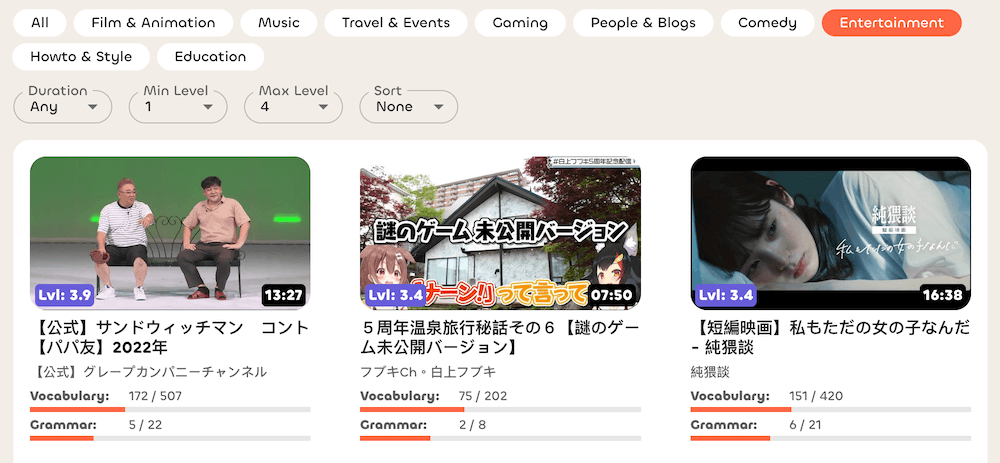
People who try immersing on native content for the first time usually face the challenge of finding the right videos to learn from. Just finding videos you love is not enough, it has to be easy enough as well. This is where HayaiLearn can be beneficial. Every Youtube video imported will have a difficulty score, and users can use "level" search filters to find videos that match their level.
Learning Kanji and grammar through Immersion
It's a little known secret that one can also learn Kanji through repeated exposure while immersing. The key is using a platform that offers popup dictionaries on individual words in a subtitle. Especially important is when the dictionary also selects the best definition that matches the meaning of the word in the sentence context, rather than showing all possible meanings. HayaiLearn is one of the few platforms that supports this.
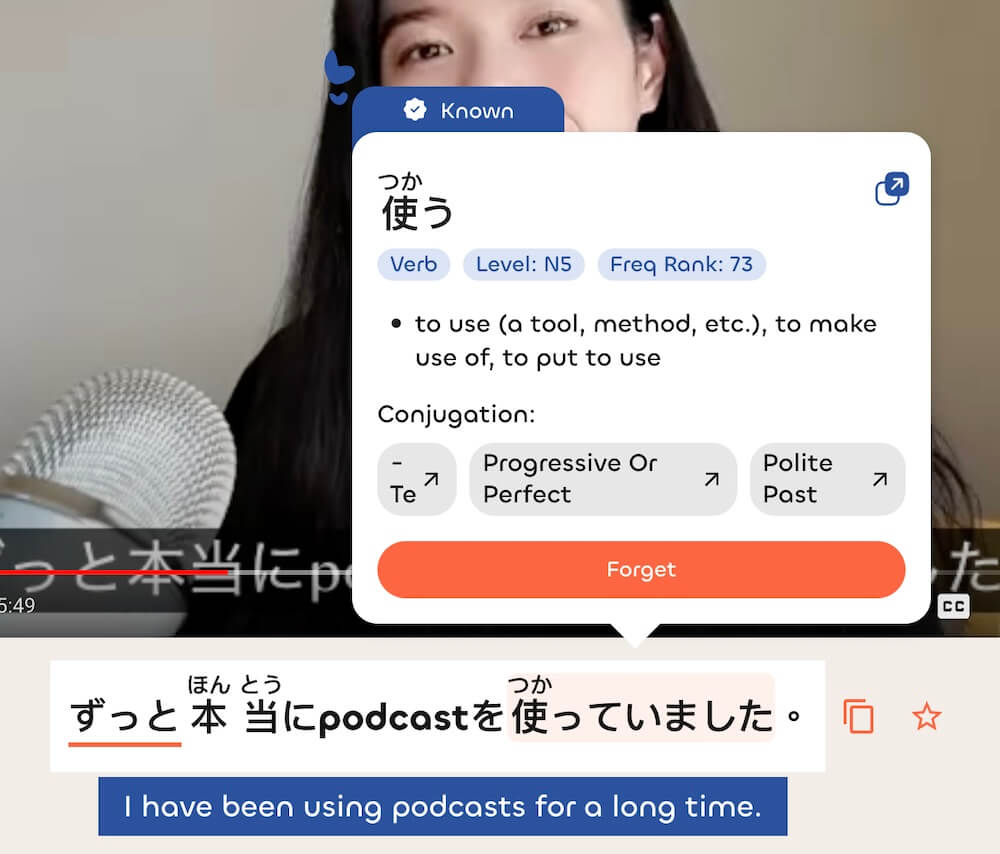
HayaiLearn also helps you learn grammar by providing grammar explanations of every line in the subtitles. This can make learning grammar feel more fun because it's relevant to what you're watching.
Read this guide for more details on the complete flow of immersion learning.
If you want to find more Youtube content to learn from, you can refer to this guide.
2. Micro-learning and habit-stacking for achieving consistency

Micro-learning is an approach in which you study in small chunks at a time. The idea is that people learn better when they focus on one thing at a time. It's very suitable in today's environment given that most people have busy schedules and think that they don't have time to learn something new. However, by allocating even a small amount of time per day for study, progress can be achieved.
With video-immersion, micro-learning can be done in different ways. One approach is to watch shorter videos to immerse with, like 1 to 5 minute videos. Another one is to dedicate short bursts of time for reviewing vocabulary (10 to 15 minutes).
To maintain consistency in learning, one effective method is called Habit Stacking. The idea is to do this new activity on top of something that you already do consistently.
Here are a few examples of habit stacking with study:
- train ride commuting to work + study
- part of morning ritual + study
- lunch break + study
- pre-sleep routine + study
- before watching netflix + study
There can be many other examples of current habits that you can potentially stack onto. Think of things that you already do automatically every day as an exercise.
Knowing that you're making progress can be another extra motivator, and also a form of reward as you continue your study sessions. HayaiLearn keeps track of the words you have marked as known and words you're learning, and displays them in a beautiful bar chart where you can see the progress over time (daily, weekly, monthly, yearly). This can be seen on the user profile.
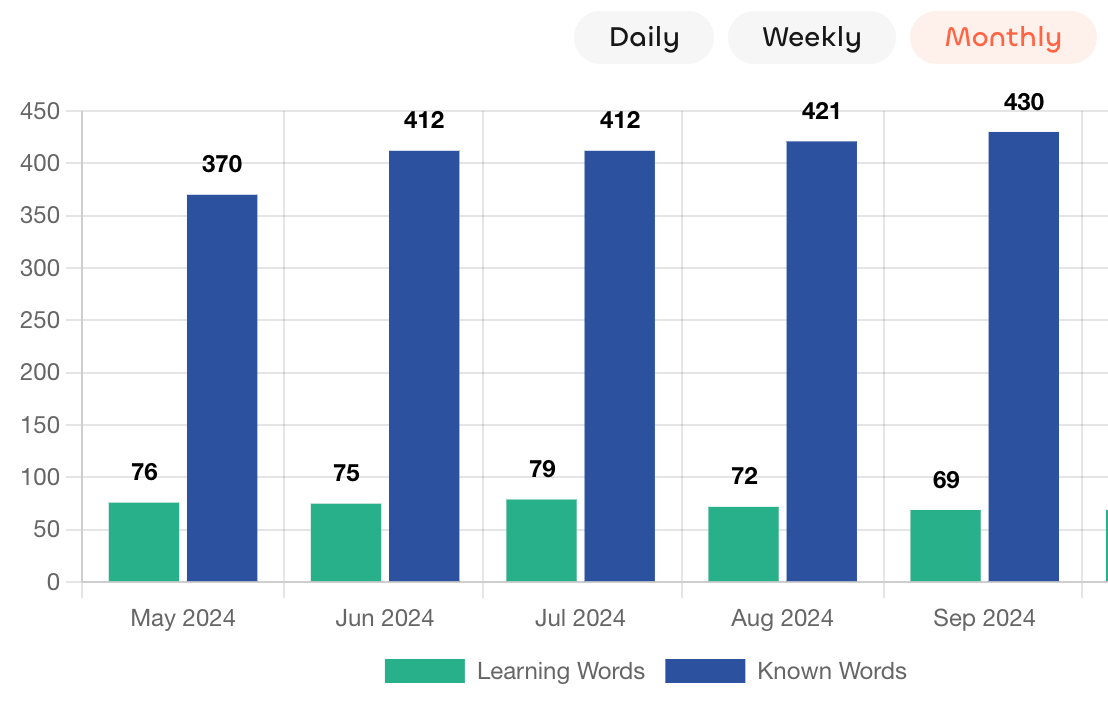
3. Create Opportunities For Practice
Knowledge becomes power only when you use it.
-- Jim Kwik from Superbrains
It's crucial to find opportunities to practice Japanese. Here are a variety of ways to practice, ranging from things you can do on your own, to things that require other people.
Shadowing

Shadowing is a technique that can be done on your own time. It involves repeating a short phrase or sentence from a video (1-5 secs) in an attempt to mimic how the native speaker speaks the language.
This has immense benefit in making sure you're pronouncing things correctly. It also establishes a stronger memory to speech muscle connection so that saying the same phrase in the future becomes easier.
It's important to choose the right person to shadow from. This is also called the "Language Parent" as coined by Refold. One, they need to enunciate words clearly, and secondly, they also need to be the same gender as you.
Tutoring Services

Use platforms like Italki or Preply to find affordable Japanese language tutors that fit your schedule. Being able to practice speaking to a live person and receiving instant feedback on your speech is valuable.
While immersion is a great learning tool, having a language tutor can further speed up your learning and help clarify any doubts you have about materials that you come across.
HayaiLearn has this feature that allows you to save sentences from subtitles, and also add notes to it. These can easily be referenced in the platform. So, if there's something that's not clear even after referring to the popup dictionary and AI explanations, your language tutor can help explain it for you.
Language Exchange
Attending local Japanese cultural events or joining language exchange meetups are also great ways to practice your Japanese. These events can offer a more friendly learning environment since the attendees understand that each party is in their respective language learning journey. So, everyone tends to be more patient in talking and listening to the other person practicing a foreign language.
Alternatively, apps like HelloTalk or Tandem can also help you practice in a fun, low-pressure environment.
The more you use Japanese, the more confident you'll become, and the more progress you'll see! Additionally, it's a good idea to start planning a visit to Japan as soon as you begin learning. You don't have to feel like "Oh, wait. I am not ready. I am just a beginner!" - having a clear goal to visit Japan can help you stay focused and motivated in your language-learning journey.
Conclusion
Learning Japanese is an exciting journey that brings new opportunities and experiences. By immersing yourself in content that you enjoy, adding micro-learning, habit-stacking, and actively seeking practice opportunities, you can overcome challenges and maintain your motivation.
This way, you'd be learning in easy mode instead of hard mode. Consider using platforms like HayaiLearn to find engaging resources that fit your interests and learning style.
Remember, becoming fluent in Japanese is something anyone can achieve. Stick to your daily learning routine, and most importantly, enjoy the journey!
